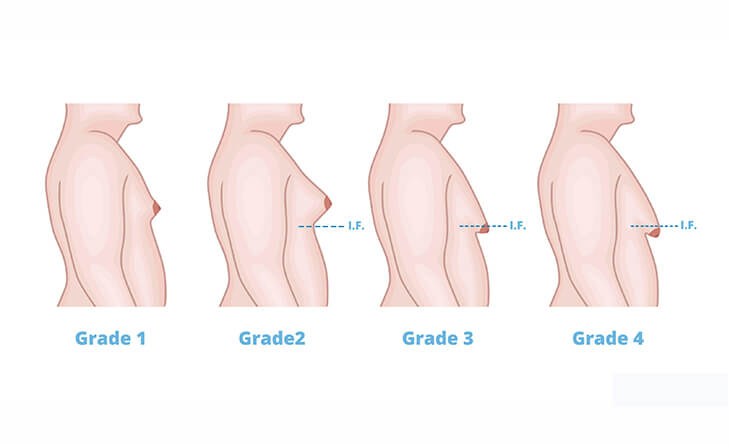Male Breast Correction
Gynecomastia is a condition of overdeveloped or enlarged breasts in men that can occur at any age, but usually develops around puberty. The condition can be the result of hormonal changes, heredity, obesity, Chronic Liver disease or the use of certain drugs.


Is Obesity linked to Male Breasts ?
Obesity is becoming more widely understood as a lead cause of gynecomastia. Large numbers of fat cells convert the male hormone testosterone into the female hormone oestrogen, leading to the development of female-like breasts. Testosterone deficiency can also be caused in many men by natural ageing, which can lead to gynecomastia in later life.
Is Male Breast Reduction Right for You?
Gynecomastia surgery can offer true freedom and restore your self-esteem.
Gynecomastia surgery candidates include:
- Healthy individuals who do not have a life-threatening illness or medical conditions that can impair healing
- Nonsmokers and non-drug users
- Men with a positive outlook and specific goals
- Men who are physically healthy and of relatively normal weight
- Men who have realistic expectations
- Men whose breast development has stabilized
Will the surgery leave Scars ?
Modern gynecomastia surgery is radically improved over older techniques. It involves liposuction to remove fat from under the skin and no longer leaves scarring.If the gland tissue is significant or it is too firm / hard, then it needs to be removed by open excision. Failing to do this completely can make the condition recur. The excess loose skin after the surgery is usually allowed to shrink as much as possible using compression garment support. Excision also is necessary if the areola will be reduced or the nipple will be repositioned to a more natural male contour. Excision is usually done through a small incision hidden within the areolar margin. Sometimes nipples may also need to be reduced.
What are Gynecomastia surgery risks?
Although uncommon, the following can occur following Gynaecomastia surgery :
- Allergic Reactions to tape, suture materials, topical preparations or injected agents
- Anesthesia risks
- Bleeding and contusions.
- Breast asymmetry, contour irregularities
- Changes in nipple or breast sensation may be temporary or permanent
- Damage to deeper structures—such as nerves, blood vessels, muscles and lungs—can occur and may be temporary or permanent
- Deep vein thrombosis, cardiac and pulmonary complications
- Fatty tissue found in the breast might die (fat necrosis)
- Fluid accumulation (seroma)
- Infection
- Persistent pain
- Poor wound healing
- Possibility of revision surgery
- Unfavourable scarring
What is the expected recovery following Gynecomastia surgery?
You may be allowed to go home the same day or at the most need to stay overnight in the hospital .
As General anesthesia is often used, there is no pain during the gynecomastia procedure, though a degree of swelling and bruising is normal. Use cold compresses to enhance healing and relieve discomfort.
Most patients can return to work within a week of gynecomastia surgery.
You will be required to wear a supporting compression garment 24/7 for up to six weeks. Avoid heavy weight lifting or strenuous activity for up to six weeks or wearing a seatbelt till you are comfortable..
Are Gynecomastia surgery results Permanent ?
Male breast reduction results are meant to be permanent – the excess fat, glandular tissue and skin, once removed are gone for good. However, it’s important to maintain a healthy lifestyle. Significant weight gain, steroid abuse, or certain medical conditions which cause hormonal imbalances could result in a recurrence of fatty gynecomastia.
Results are immediately visible. Over time, post-surgical swelling will resolve and incision lines will fade. The results of your gynecomastia surgery may take 3-6 months to achieve. Scars may be concealed in the natural contours of the breast.
